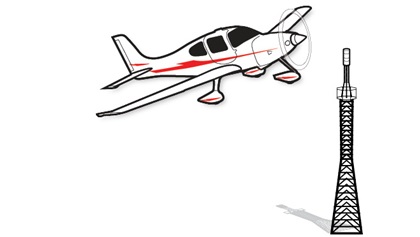Flight Lesson: Squeeze play
Sometimes rules are for fools
By Fred Simonds
In 2006, I completed VFR transition training in the Cirrus SR20. It was quite an airplane, steps up from the Cessnas, Pipers, and Grummans I had flown before. In terms of speed, comfort, and GPS navigation, it was a dream airplane.

I began participating in public-benefit Angel Flights in the SR20. On one such mission, having delivered my patient to his destination for treatment, I began working my way back VFR to Fort Lauderdale Airport.
Then new to Florida, I was unprepared for the local weather, which can build quickly during summer afternoons, especially late afternoons. As the miles ticked off, I had to descend lower and lower to remain in visual conditions. Eventually, I was down to a scary 1,200 feet, made more frightening by intermittent GPS obstacle warnings. I had no idea what obstacles might reach up and bite me, weaving back and forth to avoid the warnings. Off course with the flight in imminent danger, I was pressing the edges of safety. This was no way to fly an airplane, but I was.
What kept me so low was the fact that I was not technically legal to fly IFR. However, I had received a lot of IFR training in the airplane. When I was signed off to fly the Cirrus, the instructor noted “VFR checkout satisfactory.” Given my many hours of IFR practice, I should have insisted on an instrument proficiency check signoff as well. Too late now. As a CFI, I am a stickler for rules. But sometimes rules are for fools. Was this one of them?
I was already receiving advisories from ATC. I could have requested an IFR clearance easily. What stopped me from doing that was that the cloud bases weren’t getting any lower. The controller said there was some mild weather ahead, and then it should get better.
Another thing that stopped me was salvation in the form of discovering a multi-
lane freeway along my route. Figuring there were no tall antennas on a highway, I flew over it until the ceiling began to rise just as ATC predicted. I climbed with it.
The controller asked, “How are you doing?” I answered that I was able to climb, and the weather was improving. He added, “If you need anything, like a diversion, just let me know.” I assured him I would, but the weather continued to improve. When he handed me off, I thanked him for staying with me. “That’s what we’re here for. Good day.” By the time I reached Fort Lauderdale, it was clear.
To this day, I wonder if I did the best thing. I stayed legal but risked my life. That’s a bad trade. Even lacking an IPC, I have toyed with the idea that the safer choice might have been to get an IFR clearance, climb to a respectable altitude, and deal with the paperwork later. Had the ceiling gone any lower, I’m sure I would have done that.
Back then, I had 1,600 hours; today, I have more than three times that much. Today I would unhesitatingly ask for an IFR clearance once it became evident that further descent was risky, IPC or no. Better a live violation than a tombstone inscription, “He’s dead, but he died legally.”
Fred Simonds is a CFII who lives in Juno Beach, Florida.
 WHAT HAPPENED
WHAT HAPPENED

